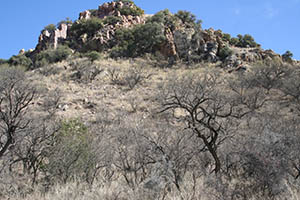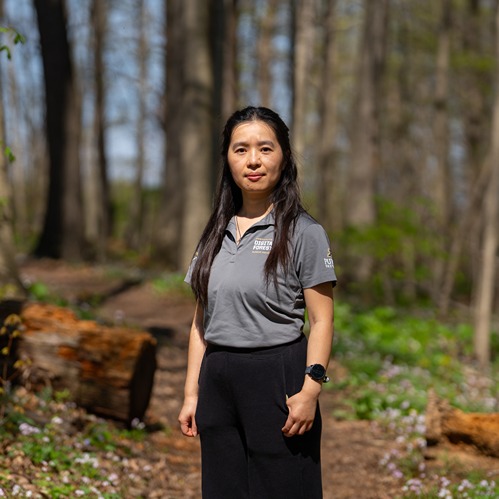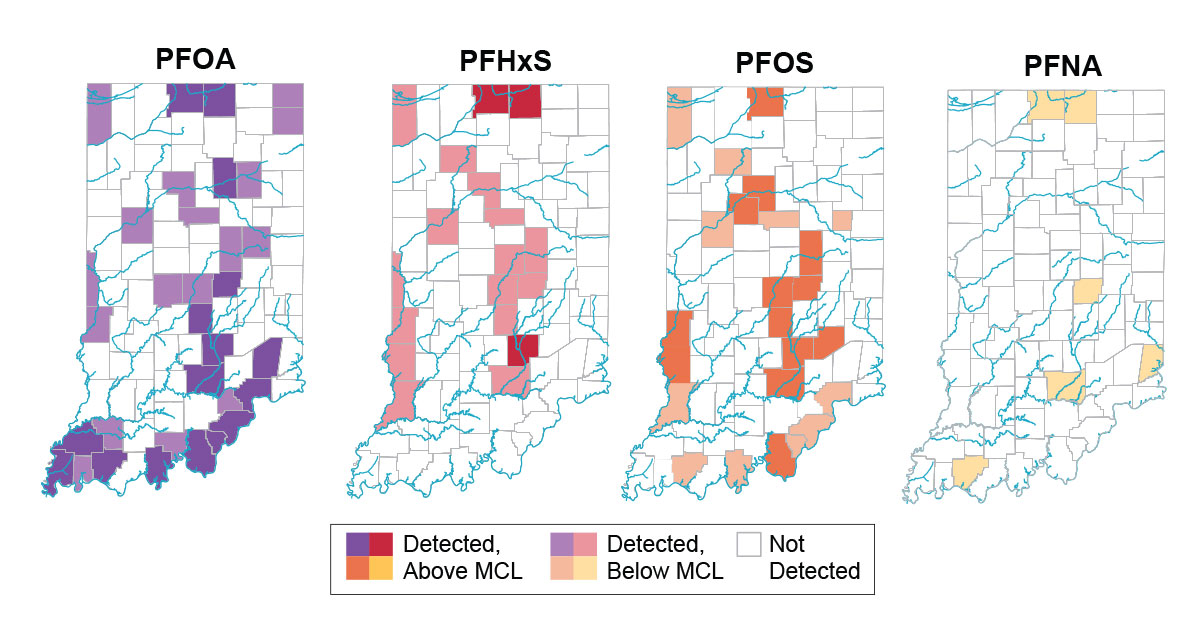As more habitat is lost and populations shrink, wild animal species become more at risk of extinction. Understanding the vulnerabilities of threatened species and populations to environmental changes, especially at the genetic level, can help inform future conservation strategies.
Recent publications by professor of genetics. J. Andrew DeWoody and former graduate student Samarth Mathur investigated the genetic diversity of different sized Montezuma quail populations from the desert Southwest. They looked at the consequences of a lack of diversity, including the capacity to adapt to ecological stressors, as well as overall fitness and population prosperity due to genetic erosion.
The Montezuma Quail is one the least studied avian species in North America as they are difficult to observe, trap or monitor. Their most suitable habitat is either steep mountains of the southwestern U.S. and Mexico like Temporal Gulch in Arizona’s Santa Rita mountains or desert grasslands like at the Empire Ranch Foundation where these quail can hide quite effectively from predators and hunters due to their cryptic nature.
Habitat degradation and fragmentation are each major threats to Montezuma quail survival. These diet and habitat specialists heavily rely on grass cover for predator evasion, and are currently experiencing a species-wide decline in the United States as their habitat has dramatically reduced due in large part to land use practices. Texas populations are listed as vulnerable by the Texas Parks and Wildlife Department, and despite their historical status as a game species, there has been no open hunting season for Montezuma quail for several decades.
Researchers compared three different populations of Montezuma quail: a smaller and more isolated population in Texas, an intermediate sized population in New Mexico and a larger population in Arizona. Whole genome sequencing data was used to quantify the levels of overall genomic diversity, genic variation, differentiation, individual inbreeding and the inferred genetic load in each population.
“We analyzed whole Montezuma Quail genome sequences to illustrate how small isolated populations have reduced genetic diversity and less potential to adapt to changing environmental conditions such as invasive species, climate and emerging infectious diseases and are more likely to be less fit due to inbreeding than individuals from diverse gene pools,” Mathur explained. “This means that by preemptively screening the gene pools, biologists can determine which populations are more inbred and which populations harbor harmful mutations. Our study showcases how proactive genetic monitoring of wild species can help devise more scientifically sound conservation strategies.”
Findings showed that as more habitat is lost and populations shrink, wild species become more inbred and lose fitness/productivity due to harmful mutations that are not exposed in larger, outbred populations. (Genetic load has potential in large populations but is realized in small inbred populations)
A lack of migration among populations limits gene flow and accelerates inbreeding, which is likely to diminish a population’s long-term potential. Small and vulnerable populations in Texas, for example, are genetically less diverse and more inbred than the larger Arizona population.
An unexpected finding was that genetically diverse populations harbor more harmful mutations than the small populations. However, larger, more diverse populations are more efficient at purging these mutations and mutations were found to be truly harmful only when individuals were inbred.
Wild gene pools are shaped over time by natural selection. This study, which compared the genomes or small and large quail populations, showed how variation is lost due to genetic erosion. Mathur and DeWoody also created a mathematical framework to quantify genetic load to help prioritize populations for conservation.
A second study helped explain why small populations carry fewer harmful mutations and why recent inbreeding is more detrimental to species fitness than long-term isolation. In this study, researchers created evolutionary models from whole genome sequence data and ran computer simulations to explain how genetic load and fitness change over time. (An evolutionary perspective on genetic load in small, isolated populations as informed by whole genome resequencing and forward-time simulations.)
“Our studies are only a small step forward in understanding the complexity of evolutionary history of any given species and applying that knowledge to better strategize conservation practices for endangered species,” Mathur notes. “We think our data illustrates the power of population genomics in evaluating adaptive potential in light of fragmented landscapes and rapid environmental change. Our studies should encourage proactive, rather than reactive, genetic monitoring of species and populations of conservation concern.”
This research was funded in part by Texas A&M AgriLife Extension Service, the Reversing the Decline of Quail in Texas Initiative and the National Institute for Food and Agriculture . Mathur was supported by a graduate research fellowship from the Welder Wildlife Foundation, which was presented at the Rob and Bessie Welder Wildlife Foundation biannual symposium in 2017.








